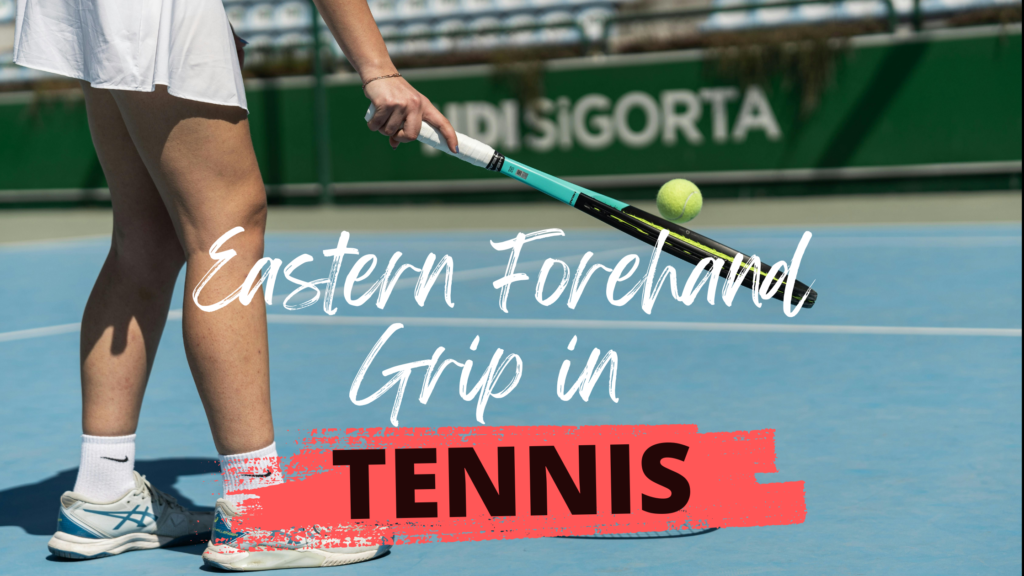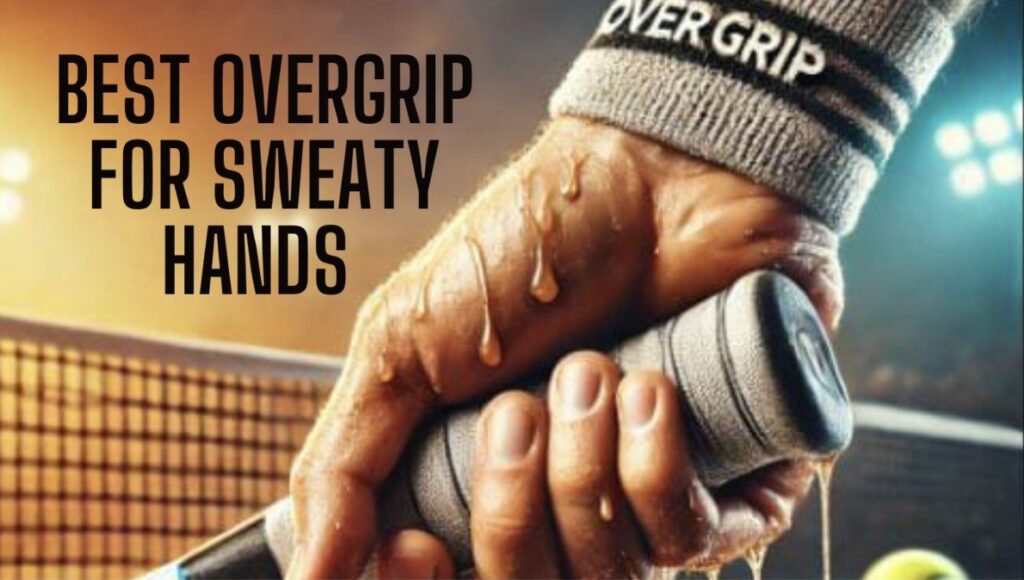
Tennis is one of the most interesting and fast-paced sports activities globally. Whether you are an amateur or an experienced player, knowledge of the right eastern forehand grip in tennis can notably enhance your overall performance. In this text, we’re diving deep into the eastern forehand grip in tennis, one of the most flexible and generally used grips in the game. From its history to the step-by-step technique and pro guidelines, we’ve given you blanketed.
What is the Eastern Forehand Grip in Tennis?
The eastern forehand grip in tennis is one of the most famous and fundamental grips in tennis. It is considered the pass-to grip for lots of players, both beginners and specialists. Why? Because of its simplicity, versatility, and capacity to generate energy and accuracy. This grip lets you strike the ball with consistency at the same time as keeping control over your shots.
A Little History of the Eastern Forehand Grip in Tennis
The Eastern grip tennis dates back to the early 1900s while tennis turned into transitioning into the contemporary generation. During this time, many pinnacle gamers, including Bjorn Borg, and Chris Evert, relied closely on the Eastern forehand grip in tennis to dominate the court. Over the years, it has remained a staple in the game, even though more modern grips, like the semi-western grip and Western grip tennis, have gained a reputation.
Types of Eastern Forehand Grip in Tennis
There are distinct sorts of eastern forehand grip in tennis that players alter based totally on their wishes. Let’s explore these types and their specific characteristics.
Semi Western Grip: A Popular Alternative to the Eastern Forehand Grip
The semi western grip is one of the maximum popular grips amongst cutting-edge expert players. It is often utilized by power baseliners who choose to generate greater topspin. Compared to the Eastern forehand grip in tennis, the semi-western grip permits the participant to swing lower to better, growing greater spin and a better trajectory.
Western Grip Tennis: Extreme Topspin for High Balls
The Western grip tennis is one of the most severe grips utilized in modern-day tennis. It’s preferred by gamers who rely closely on topspin and who are trying to cope with high-bouncing balls. While this grip produces excessive spin, it sacrifices the capacity to hit flatter pictures, making it much less flexible compared to the eastern forehand grip in tennis.
The Eastern Grip Tennis: A Staple for Consistency and Power
The Eastern grip tennis is a traditional desire for lots of gamers who prioritize hitting via the ball with electricity and consistency. This grip lets you strike the ball with awesome accuracy and force, making it ideal for gamers who like to dominate with flat forehands.
Eastern Forehand Grip in Tennis Wikipedia: Understanding Its Popularity

For an in-depth clarification, you may talk to the Eastern forehand grip in tennis Wikipedia, which gives a comprehensive examination of the records, approach, and awesome gamers who used the grip to their gain. This beneficial resource offers an in-depth understanding of the grip’s impact on the game and why it remains a favorite for plenty of tennis players nowadays.
How to Hold the Eastern Forehand Grip in Tennis (Step-by-Step)
In tennis, the eastern forehand grip in tennis begins to master how to catch a tennis racket. Here is a step-by-step guide how it is right.
Step 1: Position Your Non-Dominant Hand
First of all, grab your racket with your non-predatory hand. Hold it on the height of the waist and make sure the face of the racket is perpendicular to the ground. This step ensures that you are in the correct starting position to find the grip.
Step 2: Find Bevel Number One
Look carefully at the handle of your racket. It must have eight confused edges (imagine it as an octagonal shape). With the vertical face of the ground, the sloping is on top number one.
Step 3: Move to Bevel Number Three
Now take your most important hand (the person you play) and place the index and knuckles and heel pad on the sloping number three. For players with left -handed, it will be seven.
Index pore will be your guide here. Make sure your knuckle safely rests on the sloping and that your hand wraps comfortably around the racket. You should feel that you are holding the racket in the “grate hands” position with the handle.
Step 4: Adjust Your Grip for Comfort
When holding the racket, make sure your grip looks comfortable. It should not feel too tight, but it should not be loose. Your hand should cope with a natural, snag. The more comfort your grip, the better your ability to take the shot.
Step 5: Practice the Swing
When the grip is set, practice in advance. You should be able to be a little firm, but flexible through the ball with your wrist. The goal is to attack the ball at a natural speed, not to force it.
The Continental Grip Tennis and Its Role in Your Game
The Continental grip tennis is another crucial grip in the tennis international. It is frequently used for volleys, serves, and overheads, but is also a key grip to recognize while transitioning from the eastern forehand grip in tennis to different shots. Understanding the way to switch among the Continental grip tennis and the eastern forehand grip in tennis can give you an area in your game.
Eastern Backhand Grip Tennis: A Crucial Companion to Your Forehand
The eastern backhand grip tennis is a crucial grip for players who depend on a one-surpassed backhand. It’s regularly used in conjunction with the eastern forehand grip in tennis to provide players with a balanced technique for both their forehand and backhand pictures. The Eastern backhand grip tennis enables gamers to hit both topspin and flat backhands with precision.
Tennis Grips: Choosing the Right One for Your Style
The international of tennis grips are large, with every grip supplying an exceptional gain based on your playing style. Whether you pick out the eastern forehand grip in tennis, the semi-western grip, or the continental grip tennis, expertise in the strengths and weaknesses of everyone can help you optimize your performance. The eastern forehand grip in tennis remains one of the maximum versatile and widely used grips due to its ability to balance strength and manage even as making an allowance for brief transitions among distinctive styles of shots. Common Mistakes to Avoid with the Eastern Forehand Grip
Famous Players Who Use the Eastern Forehand Grip in Tennis
The eastern forehand grip in tennis has been used by many mythical tennis gamers through the years. Let’s test a few:
- Roger Federer: One of the high-quality gamers of all time, Federer is known for the usage of a slightly modified model of the eastern forehand grip in tennis. His capacity to hit with each power and finesse is essentially attributed to this grip.
- Bjorn Borg: A dominant pressure in the 70s and 80s, Borg used the eastern forehand grip in tennis to deliver effective and unique forehands that helped him win five Wimbledon titles.
- Chris Evert: Another tennis legend, Evert’s forehand was a component of beauty, and she or he relied closely on the eastern forehand grip in tennis to preserve her consistency and manipulation.
How to Integrate the Eastern Forehand Grip into Your Game
Now that you recognize a way to hold the eastern forehand grip in tennis, it’s time to position it into exercise. Here’s how you can incorporate it into your game:
1. Practice Your Footwork
Good footwork is vital for the usage of the eastern forehand grip in tennis efficiently. Make sure to put yourself efficaciously at the court and move fast to get into the proper stance on your forehand photographs. You have to usually purpose to put your self aspect-on to the ball for ultimate power.
2. Work on Timing and Placement
One of the keys to success with the eastern forehand grip in tennis is your potential to time your shots flawlessly. Aim to hit the ball simply after the jump and with a barely closed racket face for extra control. Focus on putting your shots within the corners of the court docket to make it difficult for your opponent to return.
3. Combine with Other Grips
The eastern forehand grip in tennis is versatile and may be effortlessly transitioned into other grips just like the continental grip tennis or the semi-western grip. Practice transitioning between these grips to enhance your all-around game, especially for volleys and serves.
Common Mistakes to Avoid with the Eastern Forehand Grip
- Holding the Racket Too Tightly: This will result in a stiff wrist and make it hard to generate velocity and spin.
- Not Adjusting for High Balls If the ball is coming at a better attitude, try and adjust your grip or footwork to get in a better role to handle the shot.
While the eastern forehand grip in tennis affords a balanced blend of power and manage, the western grip in tennis focuses more on developing severe topspin, making it perfect for managing high-bouncing balls but less effective for hitting flat shots.
Conclusion: Why the Eastern Forehand Grip in Tennis Is Right for You
The eastern forehand grip in tennis is a splendid choice for players of all ability levels. It offers a solid basis for those starting out and additionally serves as a precious grip for superior players who need to add versatility to their pictures. By the use of the eastern forehand grip in tennis, you can anticipate hitting more accurate, effective, and flat pictures, supplying you with extra manipulation over the game.
With some exercise and the right method, you can eastern forehand grip in tennis and take your tennis recreation to the subsequent degree.
Get the Right Equipment
To actually grasp the eastern forehand grip in tennis, make certain you have the proper tennis racket to your fashion. Look for a racket that fits your grip fashion and playing fashion. Whether you’re looking for light-weight options or a greater stiff racket for electricity, there are masses of tennis rackets to be had that could complement your recreation.

